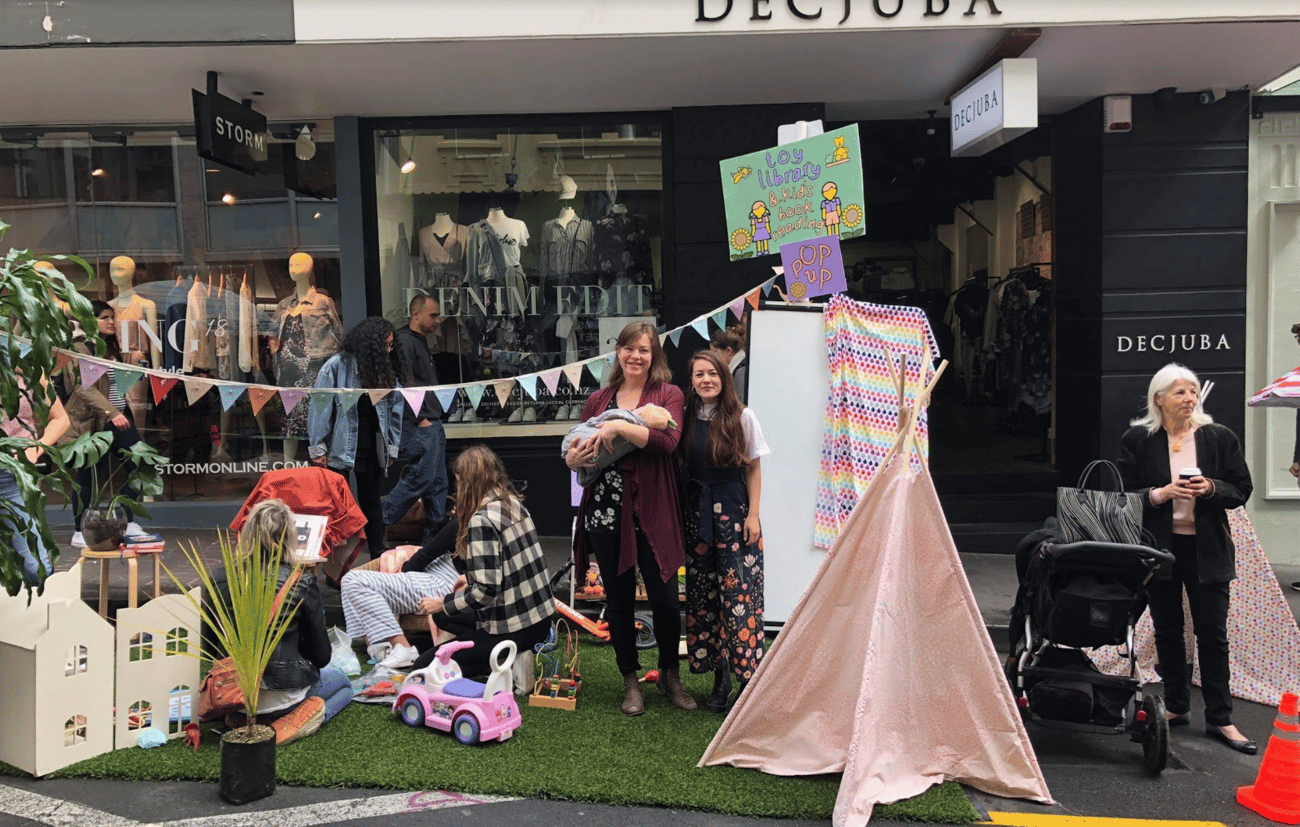Women in Urbanism talks ten ways we can design more inclusive cities

1. Greater diversity working in our urban industries.
There’s a serious lack of women in New Zealand’s urban industries at all levels. Only 15 percent of mayors and 20 percent of district mayors in Aotearoa are women. In the profession of architecture, women make up 29 percent of the industry, while 17 percent in Construction, and just 14 percent of engineers are women. There are even fewer M?ori, Pasifika and Asian women and men in these industries. This lack of representation impacts the lives and experiences of women in our communities. Historically, women have been left out of city building. This has delivered us urban environments that neglect the diverse needs of people who use cities.

2. Design cities for tamariki (children) and their caregivers.
Auckland, or T?maki Makaurau, has a serious lack of playgrounds in the CBD. Silo Park is well used, Myers Park is creepy and that’s really it for city play spaces. Parents who live in the Auckland CBD often talk about the lack of spaces for them and their children. If we want to design an inclusive city, this has to be addressed.
3. Design spaces for people. Not just beautiful, useless designs.
Women in Urbanism recently participated in International Park(ing) Day, where organisations and companies created activations in car parking spots with the brief to make them places for people. There were some really beautiful creations from firms within our industry, but many of them seemed to fail the brief. Almost all of their designs were unusable and unable to fit actual humans. It really was the most hilarious metaphor for our urban industry.
_day_beautiful_but_useless_large.png)
Women in Urbanism set up a children’s Toy Library, a playspace, and children’s book reading sessions. A children’s play group spent the day with us. Many of the mothers that used our ‘park’ stressed there weren’t enough spaces in our city for parents and children. It was easily the most used space on the day because we focused on one thing: the people we were actually designing for.

4. Protected cycle lanes and micro-mobility paths.
In cities where cycling infrastructure is high quality, more women cycle than men. Currently, more men cycle than women in Aotearoa. Cycle lanes are also a barrier from harassment. Women regularly report being harassed while out on our roads. For example, in Auckland, a woman was almost grabbed off her bike by two drunk men last year on Ponsonby Rd. Yet this doesn’t occur in places like Te Ara I Whiti – Light Path, where it’s well lit, attracts families, and is free from cars. Also, if we create cycle lanes that are safe enough for children, we’ll take a further burden off parents, particularly women who are often the primary caregivers and likely to be doing the school drop-off.
5. Housing developments that give dignity to solo mums.
Women in Urbanism recently came across an urban reuse project called Am Urban in Kreuzberg, Berlin. It was a hospital, and now it’s apartments. It’s 100 percent car-free, has a tonne of trees and play spaces, and it’s in the middle of the city, making it well connected to public transport and amenities. Importantly, it also includes affordable homes set aside for the elderly, solo mums and their children. The Carrington Hospital at the Unitec Site in Auckland is ripe for this kind of development.

6. Gender mainstreaming.
Vienna, Italy uses gender mainstreaming (a set of rules and laws) to ensure that everyone is provided with equal access to the cities infrastructure and resources, regardless of gender. It has massively impacted the area of urban planning. Since its inception, housing has been created with women in mind, the city’s parks have been retrofitted to encourage more girls to use them, and upon realising that women walked more than men (like in Aotearoa), they improved their walking network, installing lighting, ramps and widening footpaths to be the width of two prams.
7. People with prams ride buses for free.
In Stockholm, Sweden, caregivers with prams ride buses for free. This isn’t just a nice thing for the city to do to be more inclusive – it also helps with bus dwell times. The bus doesn’t have to wait very long for people with prams, and can stay on schedule.
8. Create an official way to report harassment on our streets and transport networks.
Women in Urbanism Aotearoa conducted a survey at the beginning of this year, and over 75 percent of respondents reported experiencing harassment while using our transport networks, footpaths and cycleways. We need to address this, but we cannot begin to do so until we have an easily accessible, formal way to report incidents of harassment in our city.
9. Create a car-free CBD.
Pedestrian streets are inclusive streets. When you open a street to people and close it to cars, it feels and is safer. This is why you see more prams and wheelchairs when you close off Queen St for a festival, for example. It we want to start designing equitable cities, then cars need to go and we need to open up our CBD to people.
10. More toilets and public changing rooms.
You’ve probably noticed that toilets are scarce in Auckland. Also, if you’re a parent, you would have noticed change tables are mostly located in the women’s bathrooms, which is pretty unhelpful if you’re a dad.
Bonus: Well-lit underpasses (and more lighting in general).
We have an oversupply of creepy underpasses in Auckland. We should light them and make them safe and interesting, like they do in Cologne, Germany.





